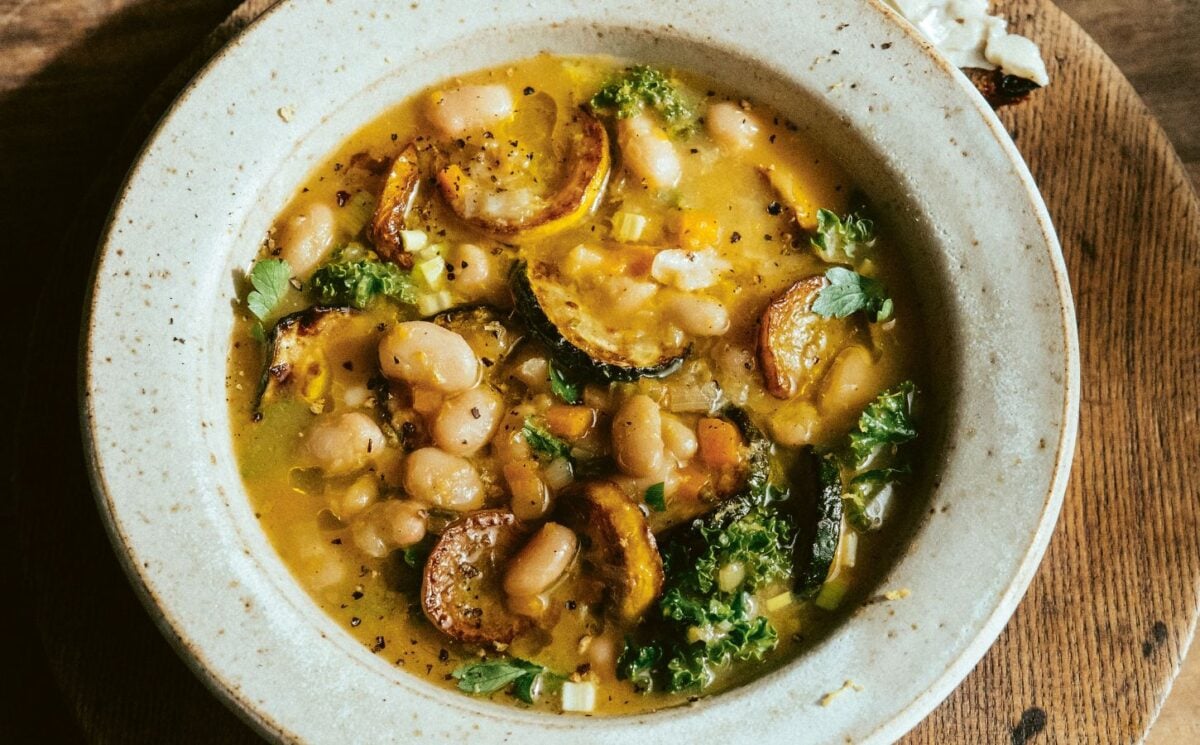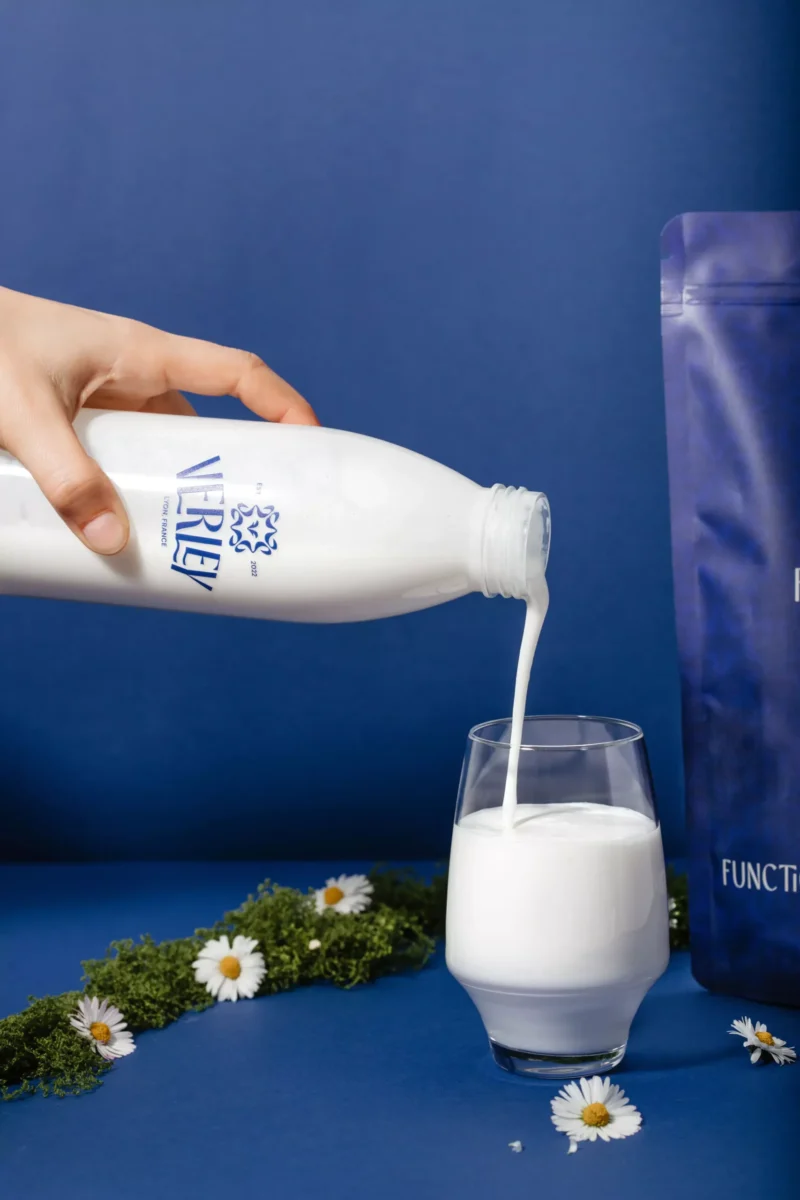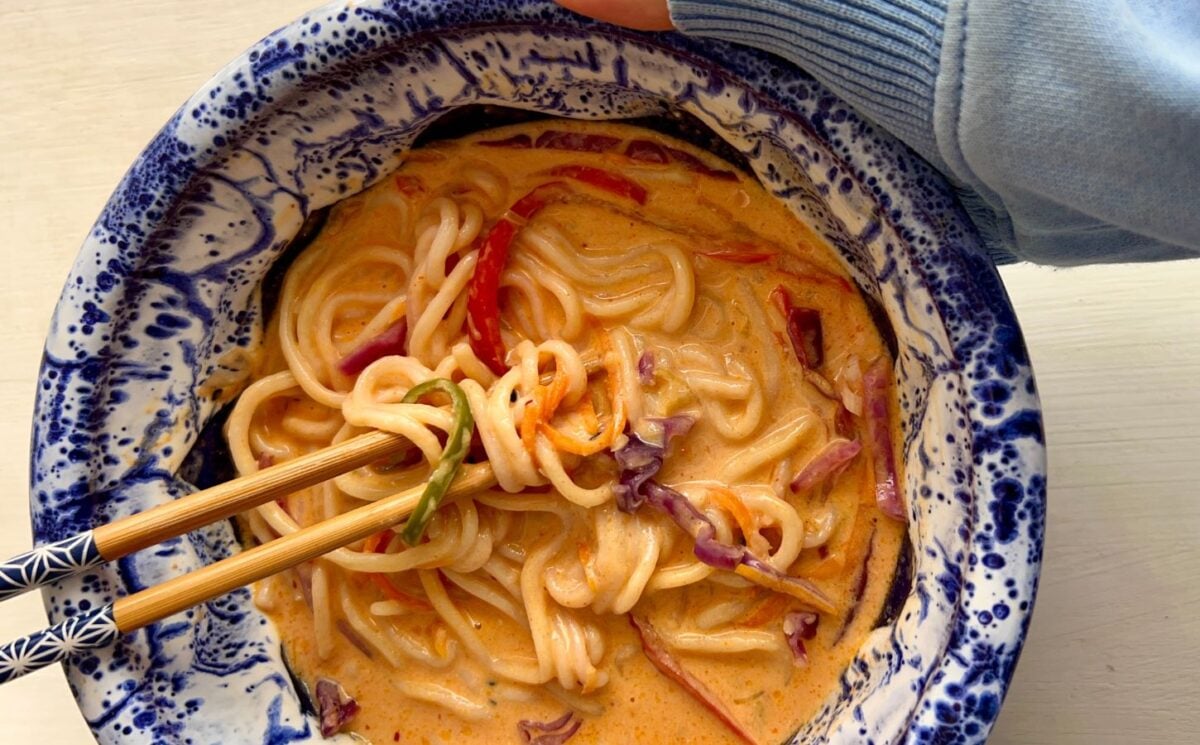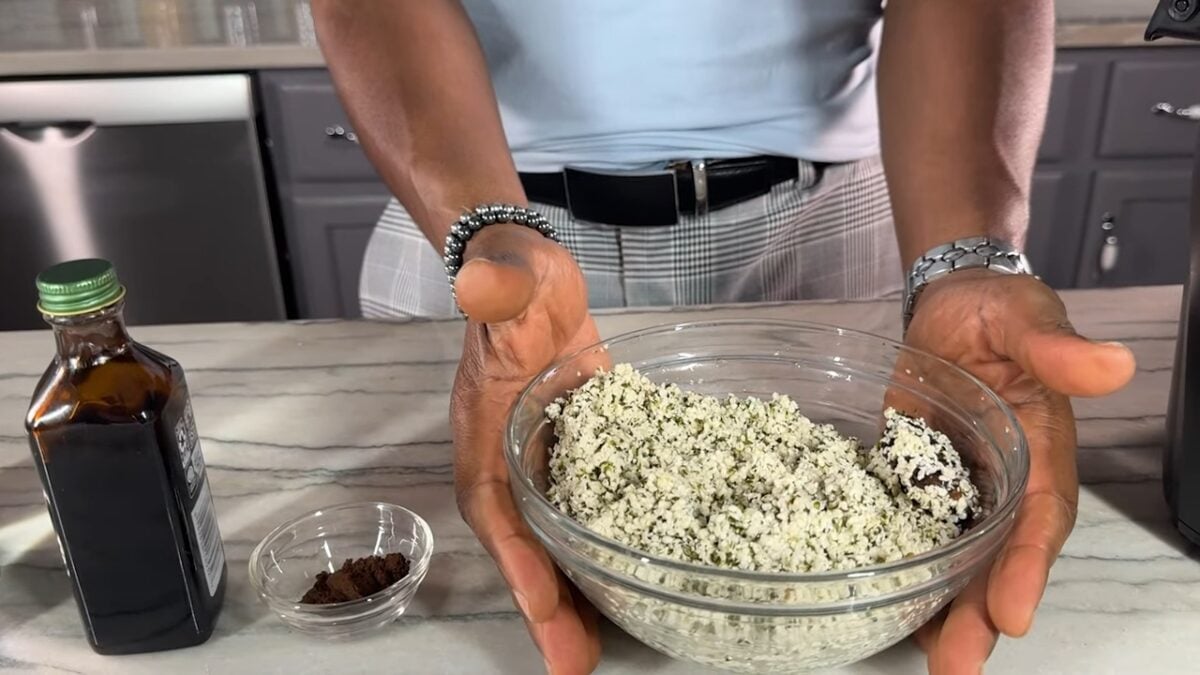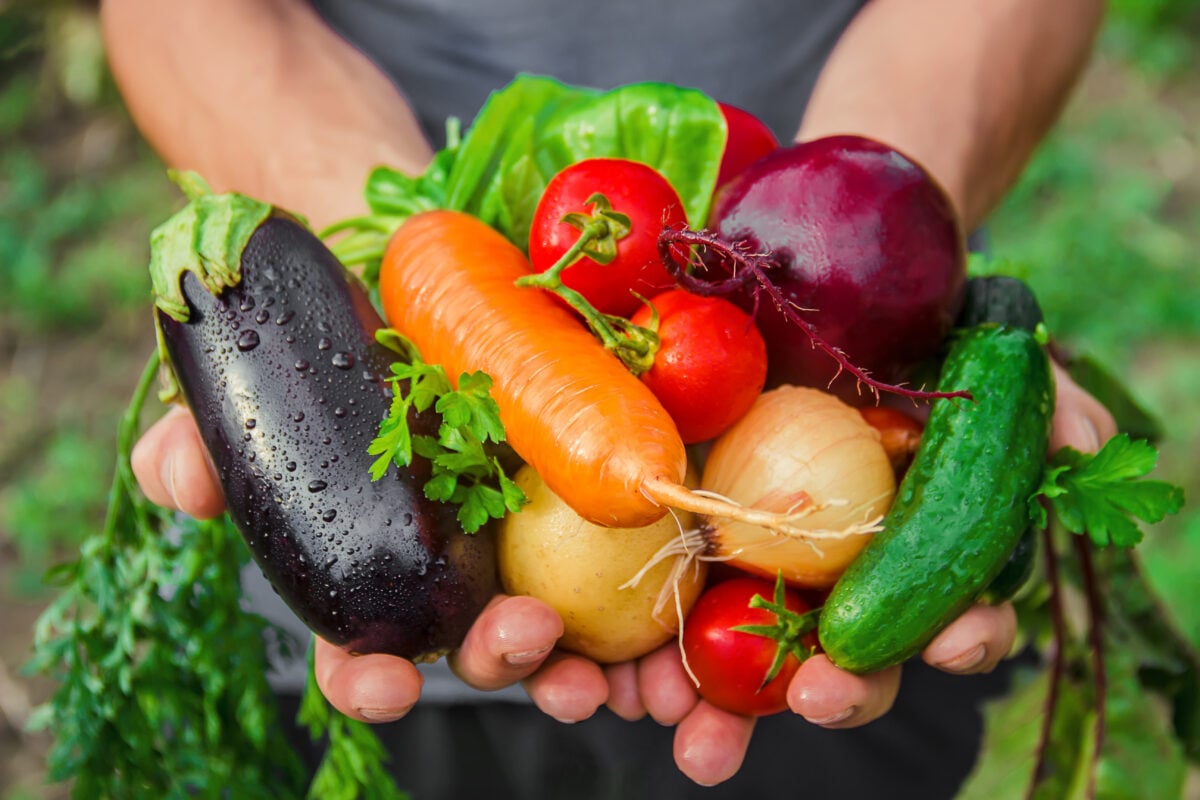Непереносимость Лактозы - 65% Вероятность Того, Что Она у Вас Есть
Люди европейского происхождения могут пить молоко, а остальные жители Земли страдают непереносимостью лактозы. Однако в молоке есть вещества, которые никто из нас не переносит.
Милош Покимица
Автор: Милош Покимица
Медицинская Обзор: Доктор Сюйинь Ван, Доктор Медицинских Наук.
Обновлено 7 мая 2023 годаЛюди европейского происхождения могут пить молоко, а остальные жители земного шара страдают непереносимостью лактозы. У чернокожих африканцев непереносимость лактозы составляет 98%, аналогичные показатели для непереносимости лактозы в Азии (Ugidos-Rodríguez et al.)[1].
Научные исследования, проведенные в различных древних европейских геномах, подтвердили, что 8000 лет назад охотники-собиратели в Европе не могли усваивать лактозу, содержащуюся в молоке. Первые европейцы, одомашнившие диких животных, также не могли употреблять молоко. Переселенцы, пришедшие с Ближнего Востока около 7800 лет назад, также имели непереносимость лактозы. Ямные скотоводы, пришедшие в Европу из восточных степей около 4800 лет назад, также имели непереносимость лактозы.
Только около 2300 г. до н.э., примерно 4300 лет назад, в начале бронзового века, толерантность к лактозе распространилась по Европе (Gamba et al.)[2]. В современном мире большая часть населения по-прежнему не может переварить молоко. Если люди с непереносимостью лактозы употребляют продукты, содержащие лактозу, они могут испытывать вздутие живота, тошноту, боли в животе, метеоризм и диарею.
Лактоза расщепляется до обычного полезного сахара под действием специфического фермента лактазы, вырабатываемого клетками стенки тонкой кишки (Storhaug et al.)[3]. Выработка лактазы выключается у млекопитающих во взрослом возрасте, поскольку млекопитающие кормят грудью только в первые периоды после рождения. В дальнейшем в средних условиях жизни необходимость в этом ферменте отпадает, поскольку ни одно млекопитающее, кроме человека, больше не кормит грудью. Взрослые виды млекопитающих не кормят грудью, и организм приспособлен к отключению ферментов для экономии энергии. Одомашнивая диких животных и доя их, первые земледельцы меняли условия среды обитания, и со временем организмы адаптировались.
Сегодня молоко могут переваривать только потомки европейских фермеров. Чернокожие африканцы не могут. Азиаты - нет. Статистика по непереносимости лактозы такова. Примерно 65% всей человеческой популяции имеют сниженную способность переваривать лактозу после младенчества. Для сравнения: непереносимость лактозы наблюдается у 5% людей североевропейского происхождения.
Однако в молоке есть много веществ, которые мы не переносим. Даже если мы родом из стран - королевы молочного животноводства, мы все равно плохо переносим такие вещества, как холестерин, лактоморфин, называемый казоморфином, и эстрадиол (на долю молочных продуктов приходится от 60 до 80 процентов всего эстрогена, потребляемого обычным человеком). Американская диета). Опиаты, поступающие с молоком матери, оказывают седативное действие на младенца. Именно этот седативный эффект в значительной степени определяет связь между матерью и младенцем. Молоко оказывает на детеныша (или детенышей других млекопитающих) наркотическое воздействие, и это гарантирует, что малыш сблизится с матерью и пойдет к кормилице, чтобы получить питательные вещества. Это эволюционно выгодная адаптация. Подобно героину или кодеину, казоморфины замедляют движения кишечника и оказывают противодиарейное действие. Опиатный эффект является причиной того, что сыр может вызывать запоры, как и опиатные болеутоляющие средства.
Лактаза - это фермент, который позволяет организму переваривать молочный сахар, а этот сахар - лактоза. У датчан непереносимость лактозы составляет всего 2%.
Все млекопитающие после отказа от сосания испытывают дефицит лактазы. В дальнейшем они не имеют контакта с молоком. Реакция любого организма, которому во взрослом возрасте не нужно использовать сахар лактозу, заключается в деактивации фермента лактазы на уровне генов. За исключением европейских земледельцев, которые тысячелетиями заставляли свои организмы потреблять ее.
Так, датчане сегодня нетолерантны только на 2%, финны - на 18%, индийцы - на 50%, израильские евреи - на 58%, афроамериканцы - на 70%, евреи-ашкенази - на 78%, арабы - на 78%, тайваньцы - на 85%, греки-киприоты - на 85%, японцы - на 85%, таиландцы - на 90%, филиппинцы - на 90%, черные африканцы - более 90% (Storhaug et al.)[3]. ВОЗ увеличила это число, заявив, что оно составляет от 95% до 100%, для индийцев - от 90 до 100, для азиатов - от 90 до 95, для средиземноморцев - от 60 до 75, для Северной Америки - от 10 до 15 и для Европы - от 5 до 10 процентов.
Настоящая проблема заключается в том, что даже при наличии лактозной толерантности лактоза метаболизируется неестественным образом и не предназначена для длительного употребления. У нас есть фермент лактаза, который расщепляет сахар лактозу на декстрозу и галактозу. Половина декстрозы - это глюкоза, а другая половина - галактоза.
Однако галактоза не может быть использована до тех пор, пока она не будет переварена в глюкозу. Клетки используют глюкозу только в качестве топлива. Существует фермент бета-галактозидаза, который превращает галактозу в необходимую нам глюкозу. Однако, поскольку после отторжения ни одно животное не нуждается в этом ферменте, он дезактивируется навсегда. Каждый человек на планете Земля, если это взрослый индивидуум, имеет дефицит галактозидазы. У всех, кто сейчас это читает, и у меня в том числе, дефицит бета-галактозидазы. Это означает, что если вы потребляете сахар из молока, то есть лактозу, если вы толерантны к лактозе, вы можете ее использовать, у вас есть лактаза. Лактаза метаболизирует лактозу, и вы получаете глюкозу и, кроме того, галактозу. Глюкоза будет использоваться нормально. А с галактозой что мы будем делать? Мы не можем ее использовать, так куда же девать галактозу?
Часть ее выводится наружу через кожу. Часть попадает в глаза и откладывается в роговице. Катаракта у пожилых людей возникает из-за галактозы. Взрослые люди, потребляющие большое количество молока и обладающие высокой активностью лактазы, часто страдают от накопления галактозы - галактитола в глазных долях и имеют высокую вероятность развития старческой катаракты (Arola et al.)[4].
Мало того, он откладывается в организме и в других местах. У женщин он накапливается вокруг яичников, и это связывают с раком яичников и бесплодием. В европейских странах каждая четвертая пара обращается за лечением бесплодия. В африканских странах, где не употребляют молоко, проблем с бесплодием нет. Оно неизвестно как заболевание. В исследовании Гарвардской медицинской школы Daniel W. Cramer (Mustafa et al.)[5] связь между потреблением галактоза и повышенный риск развития рака яичников наблюдалось. Женщины с непереносимостью лактозы, скорее всего, потребляют меньше лактозы. Авторы пришли к выводу, что: "Этот вывод позволяет предположить, что снижение потребления лактозы в раннем возрасте может снизить риск развития рака яичников, хотя для подтверждения этого вывода необходимы дальнейшие исследования". У тайских женщин, например, которые не употребляют молоко, бесплодие не наблюдается на уровне статистической значимости. В Таиланде, где 98% взрослых не переносят лактозу, средний показатель фертильности среди женщин в возрасте 35-39 лет был всего на 26% ниже, чем максимальный показатель для возраста 25-29 лет. В Австралии и Великобритании, где непереносимостью лактозы страдает лишь 5% взрослых людей, показатели рождаемости среди 35-39-летних на целых 82% ниже максимального показателя для 25-29-летних.
Помимо рисков, связанных с употреблением молока, которое могут пить люди, толерантные к лактозе, что произойдет, если молоко выпьет человек, не толерантный к лактозе? Сахар из молока будет непереваренным. Это приведет к тому, что лактоза будет расщеплена бактериями в кишечнике. Бактерии начинают размножаться, это повышает осмотическое давление, жидкость поступает в кишечник, и у человека начинается диарея.
После Второй мировой войны в США скопились большие запасы сухого молока, которые нужно было как-то утилизировать. Вместо этого они решили, что, поскольку существует "белковый дефицит", они отправят это сухое молоко в Африку в качестве гуманитарной помощи. Многие и без того недоедающие дети и младенцы заболели диареей. В африканских странах, куда сухое молоко было отправлено в качестве гуманитарной помощи, увеличилась смертность, особенно среди маленьких детей, которые уже находились на уровне тяжелого недоедания.
Ссылки:
Отрывки, выбранные из книги: Покимица, Милош. Стать веганом? Обзор науки, часть 1. Киндл эд., Amazon, 2018.
- Угидос-Родригес, Сантьяго, и др. "Мальабсорбция и непереносимость лактозы: A Review." Питание и функции, vol. 9, no. 8, Royal Society of Chemistry, Aug. 2018, pp. 4056-68. https://doi.org/10.1039/c8fo00555a.
- Гамба, Кристина и др. "Геномный поток и стазис в пятитысячелетнем разрезе европейской предыстории". Nature communications vol. 5 5257. 21 Oct. 2014, doi:10.1038/ncomms6257
- Сторхауг, Кристиан Лёвольд и др. "Страновые, региональные и глобальные оценки мальабсорбции лактозы у взрослых: систематический обзор и мета-анализ". Ланцет. Гастроэнтерология и гепатология vol. 2,10 (2017): 738-746. doi:10.1016/S2468-1253(17)30154-1
- Арола, Х., и А. Тамм. "Метаболизм лактозы в организме человека". Скандинавский журнал гастроэнтерологии. Приложение vol. 202 (1994): 21-5. doi:10.3109/00365529409091741
- Мустафа, Осама М., и Яссин Дж. Дауд. "Связано ли потребление диетического молока с историей экстракции катаракты у пожилых людей? Анализ данных по населению США". Журнал офтальмологии, том 2020, Hindawi Publishing Corporation, Feb. 2020, pp. 1-7. https://doi.org/10.1155/2020/2562875.
- Мерритт, Мелисса А. и др. "Молочные продукты и питательные вещества в связи с риском развития рака яичников и основных гистологических подтипов". Международный журнал по онкологии vol. 132,5 (2013): 1114-24. doi:10.1002/ijc.27701
У вас есть какие-либо вопросы о питании и здоровье?
Я хотел бы услышать ваше мнение и ответить на них в моем следующем посте. Я ценю ваш вклад и мнение и с нетерпением жду вашего скорого ответа. Я также приглашаю вас следовать за нами на Facebook, Instagram и Pinterest для получения дополнительной информации о диетах, питании и здоровье. Там можно оставить комментарий и пообщаться с другими приверженцами здорового образа жизни, поделиться своими советами и опытом, а также получить поддержку и ободрение от нашей команды и сообщества.
Я надеюсь, что эта статья была для вас познавательной и приятной и что вы готовы применить полученные знания. Если эта статья оказалась полезной, пожалуйста поделиться с друзьями и родственниками, которым это может быть полезно. Никогда не знаешь, кому может понадобиться совет и поддержка на пути к здоровью.
– Вам Также Может Понравиться –

Узнайте о Питании
Милош Покимица - доктор естественной медицины, клинический диетолог, автор статей о здоровье и питании и консультант по вопросам питания. Автор серии книг Стать веганом? Обзор науки, он также управляет веб - сайтом natural health GoVeganWay.com
Медицинский Отказ от Ответственности
GoVeganWay.com предлагает вам обзоры последних исследований, связанных с питанием и здоровьем. Предоставленная информация представляет собой личное мнение автора и не предназначена и не подразумевается в качестве замены профессиональной медицинской консультации, диагностики или лечения. Предоставленная информация предназначена исключительно для информационных целей и не предназначена для замены консультации, диагностики и/или лечения у квалифицированного врача или поставщика медицинских услуг.НИКОГДА НЕ ПРЕНЕБРЕГАЙТЕ ПРОФЕССИОНАЛЬНЫМИ МЕДИЦИНСКИМИ СОВЕТАМИ И НЕ ОТКЛАДЫВАЙТЕ ОБРАЩЕНИЕ ЗА МЕДИЦИНСКОЙ ПОМОЩЬЮ ИЗ-ЗА ТОГО, ЧТО ВЫ ЧТО-ТО ПРОЧИТАЛИ Или ПОЛУЧИЛИ ДОСТУП Через GoVeganWay.com
НИКОГДА НЕ МЕНЯЙТЕ ОБРАЗ ЖИЗНИ Или КАКИЕ-ЛИБО ИЗМЕНЕНИЯ ВООБЩЕ ВСЛЕДСТВИЕ ТОГО, ЧТО ВЫ ПРОЧИТАЛИ В GoVeganWay.com ДО КОНСУЛЬТАЦИИ С ЛИЦЕНЗИРОВАННЫМ ПРАКТИКУЮЩИМ ВРАЧОМ.
В случае неотложной медицинской помощи немедленно позвоните врачу или 911. GoVeganWay.com не рекомендует и не одобряет какие-либо конкретные группы, организации, тесты, врачей, продукты, процедуры, мнения или другую информацию, которая может быть упомянута внутри.
Выбор редактора –
Милош Покимица - доктор естественной медицины, клинический диетолог, автор статей о здоровье и питании и консультант по вопросам питания. Автор серии книг Стать веганом? Обзор науки, он также управляет веб - сайтом natural health GoVeganWay.com
Последние статьи -
Новости , Основанные на растениях
-
Some Dogs Can Sort Toys By Function, Says New Study On Canine ‘Label Extension’
on Ноябрь 5, 2025
-
Courgette, Leek, White Bean And Kale Stew
on Ноябрь 5, 2025
-
Precision Fermented Dairy Proteins Receive ‘No Questions’ Approval From FDA
on Ноябрь 4, 2025
-
This One-Pan Ramen Is Ready In 30 Minutes
on Ноябрь 4, 2025
-
How to Make Fresh Vanilla Hemp Milk at Home
on Ноябрь 3, 2025
-
Animal Farming Is ‘World’s Biggest Cause Of Food Waste,’ Says Report
on Ноябрь 3, 2025
-
Butter Bean And Sweet Papas Coconut Stew
on Ноябрь 2, 2025
Главные Новости Эдравоохранения — ScienceDaily
- Scientists uncover meditation’s hidden side effectson Ноябрь 5, 2025
Meditation is widely praised for its mental health benefits, but new research shows that it can also produce unexpected side effects for some people—from anxiety and dissociation to functional impairment. Psychologist Nicholas Van Dam and his team found that nearly 60% of meditators experienced some kind of effect, and about a third found them distressing.
- Most Americans don’t know alcohol can cause canceron Ноябрь 5, 2025
Most U.S. adults don’t realize alcohol raises cancer risk, and drinkers themselves are the least aware. Scientists say targeting these misbeliefs could significantly reduce alcohol-related cancer deaths.
- A breakthrough map reveals how the brain really workson Ноябрь 5, 2025
Scientists have shown that brain connectivity patterns can predict mental functions across the entire brain. Each region has a unique “connectivity fingerprint” tied to its role in cognition, from language to memory. The strongest links were found in higher-level thinking skills that take years to develop. This work lays the groundwork for comparing healthy and disordered brains.
- A shapeshifting protein explains rabies’ deadly poweron Ноябрь 5, 2025
Researchers discovered how rabies virus exerts massive control over host cells with very few genes. A key viral protein changes shape and binds RNA, allowing it to infiltrate different cellular systems. This adaptability could explain the power of other deadly viruses, including Nipah and Ebola. The breakthrough may lead to next-generation antivirals or vaccines.
- Cockroaches are secretly poisoning indoor airon Ноябрь 5, 2025
Cockroach infestations don’t just bring creepy crawlers, they fill homes with allergens and bacterial toxins that can trigger asthma and allergies. NC State researchers found that larger infestations meant higher toxin levels, especially from female roaches. When extermination eliminated the pests, both allergens and endotoxins plummeted. The findings highlight how pest control is vital for cleaner, healthier air indoors.
- Scientists shocked to find E. coli spreads as fast as the swine fluon Ноябрь 5, 2025
Researchers have, for the first time, estimated how quickly E. coli bacteria can spread between people — and one strain moves as fast as swine flu. Using genomic data from the UK and Norway, scientists modeled bacterial transmission rates and discovered key differences between strains. Their work offers a new way to monitor and control antibiotic-resistant bacteria in both communities and hospitals.
- Tiny molecules could stop glaucoma before it blindson Ноябрь 5, 2025
Scientists at Mizzou have identified two small molecules, agmatine and thiamine, that could both reveal and fight glaucoma. Their research shows these compounds are lower in glaucoma patients, suggesting they may serve as early warning markers. Even better, they might help protect retinal cells from damage, potentially slowing or stopping vision loss. The discovery could revolutionize how the disease is detected and treated.
Опубликованный, #веганская диета –
- Impact of in vitro digestion on the cytotoxicity and microbial viability of cholinesterase-inhibitor-rich vegan soups in human intestinal cell modelson Ноябрь 1, 2025
Vegan lunch soups formulated with mushroom, asparagus, leek, and sea buckthorn were previously developed by our team to provide a consistent daily intake of dietary cholinesterase inhibitors. Considering the proposed continuous consumption of these functional soups, it is essential to examine any cytotoxic responses that may occur in the gastro-intestinal tract. This work starts this topic by investigating the effect of in vitro digested soups towards selected human intestinal cells and…
- A 6-Month, Prospective, Multi-arm Study for the Efficacy of Standardized Nutraceuticals to Improve Hair Fiber Thickness and Strengthon Октябрь 31, 2025
CONCLUSIONS: This study demonstrates that ingestion of these bio-specific HGNs are associated with significantly enhanced hair shaft diameter and decreased breakage, resulting in longer, stronger hair across their intended populations. These findings support the use of these HGNs for hair thinning, offering alternative options for various populations for improving hair growth and thickness.
- Consumer Acceptance of Sustainable Cat Diets: A Survey of 1380 Cat Guardianson Октябрь 29, 2025
There is increasing awareness about the adverse environmental and ‘food’ animal welfare impacts associated with the production of meat-based pet food. However, little is known about cat guardians’ acceptance of more sustainable food choices for the global population of approximately 476 million pet cats. By surveying 1380 cat guardians, this study explored feeding patterns used by guardians, determinants of their cat food choices, and their acceptance levels of more sustainable cat food…
- Consumer Acceptance of Sustainable Dog Diets: A Survey of 2639 Dog Guardianson Октябрь 29, 2025
Interest in more sustainable diets for the global population of 528 million companion dogs is steadily increasing, encompassing nutritionally sound cultivated meat, vegan, and microbial protein-based dog foods. Factors driving these alternative dog foods include lower impacts on the environment, fewer welfare problems related to intensively farmed animals and wild-caught fish, and potentially superior canine health outcomes, relative to conventional meat-based dog food. Through a […]
- Beliefs and behaviours associated with vegetarian, vegan, and gluten-free diets among Canadians capable of bearing childrenon Октябрь 29, 2025
There is increased interest in self-selected exclusionary diet patterns, specifically vegetarian, vegan, and gluten-free (GF) diets, but there is a lack of research exploring the beliefs and behaviours surrounding these diets in Canadians capable of bearing children (CCBC). The goal of this study was to explore the beliefs and behaviours of CCBC who follow vegetarian, vegan, and/or GF diets using mixed methods. A self-administered online Qualtrics™ survey containing 102 questions was […]
Случайные сообщения –
Популярные сообщения -

Последние новости от PubMed, #растительная диета –
- Diet quality scores and incidence of cardiovascular events: A 4-year prospective study of patients in cardiology secondary care (BALANCE Program Trial)by Aline Rosignoli da Conceição on Ноябрь 5, 2025
As a modifiable determinant, dietary patterns are a crucial factor in the prevention of cardiovascular disease (CVD), as they account for more than half of all CVD-related deaths and disabilities. Thus, we aimed to assess whether changes in diet quality along with six a priori-defined diet scores were associated with the incidence of cardiovascular (CV) events during four years of follow-up of secondary care cardiology patients. We conducted a secondary prospective analysis of 1,704, 1,629 […]
- Dietary animal fat disrupts gut microbiota and aggravates Scl-cGVHD after allogeneic hematopoietic stem cell transferby Danielle D Millick on Ноябрь 5, 2025
Allogeneic Hematopoietic Stem Cell Transplant (allo-HCT) is an effective treatment for high-risk or relapsed acute leukemia. However, the frequent occurrence of graft-versus-host disease (GVHD) poses significant complications. Modifiable factors such as the gut microbiome and dietary regimen have the potential to influence the frequency and severity of GVHD. Previous studies in mouse models have shown a direct link between obesity and increased severity of GVHD. Analysis of human data has not…
- Dose-response effects of a mixed condensed and hydrolyzable tannin extract on methane production and diet digestibility using the in vitro gas production techniqueby Jordan M Adams on Ноябрь 5, 2025
Several studies have evaluated the impact of isolated condensed or hydrolyzable tannin extract (TE) supplementation for beef cattle on methane (CH4) mitigation and metabolic functions, but fewer have evaluated their combination. Our objective was to investigate changes in in vitro fermentation dynamics, CH4 production, neutral detergent fiber digestibility (ivNDFD), and ruminal volatile fatty acid (VFA) concentrations in response to the inclusion rate of a TE blend (Silvafeed ByPro; […]
- Discovery of urinary biomarkers of kiwifruit intake in a randomized intervention studyby Zilin Xiao on Ноябрь 4, 2025
CONCLUSIONS: This study identified potential biomarkers of kiwifruit and developed a prediction model that may differentiate consumers. Further validation is necessary to confirm the reliability and generalizability of our findings.
- Nourishing the Skin: A Review of Diet’s Role in Hidradenitis Suppurativaby Jordan Beam on Ноябрь 4, 2025
Hidradenitis suppurativa (HS) is a complex skin condition influenced by both genetic and environmental factors. Increasing evidence points to diet as a key contributor to disease severity through systemic inflammatory pathways. A review of recent literature was conducted to evaluate the relationship between dietary patterns and advancement of HS. Pro-inflammatory diets such as the Western diet, leucine-rich diets, and brewer’s yeast were associated with HS exacerbation through mTOR activation…
- Energy balance in cyclists on plant-based diets during a 30-day, 4300-km ride across Canada: Two case studiesby Sarah A Purcell on Ноябрь 3, 2025
The popularity of ultra-endurance events and plant-based diets highlights the importance of understanding the energetics of athletes with diverse dietary preferences. This study examined energy balance in two recreational cyclists on plant-based diets (male, 41 years; female, 38 years) during a 30-day cross-Canada ride. Resting energy expenditure was measured via whole-room indirect calorimetry before and after the ride. Total energy expenditure (TEE) was assessed using doubly labeled water…












